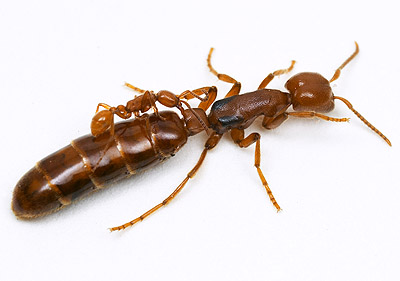
I am working on a project with Jamie Gillooly examing how various life history traits scale in ant colonies. Specifically, we are testing the hypothesis that when total colony mass is used (instead of the mass of an individual in the colony) social insects scale much like their unitary counterparts.
From the subject heading, you can see where I am going with this. Allometries need to be tested across the entire natural range of variability, and a regression of total worker mass against queen mass (of monogyne colonies) needs army ants and leafcutters.
Do all y'all have any army queens and/or Atta/Acromyrmex queens, pinned or in EtOH that you can lend me for two weeks? Â I intend to take a series of morphometrics that would allow me to estimate dry weight (and, if given the go ahead, I would dry a few individiuals of the far less "expensive" leafcutters to test the efficacy of the morphometrics in predicting dry weights).
If not for me, do it in the spirit of old "Neivy", the mascot from our 2005 AntCourse (courtesy of Alex).
Thanks in advance for any help you can send my way.
Best
M
ps- I almost forgot--I have plenty of males of P. clavata, but only once had the opportunity, and then, lacked the courage, to nab a queen. If I could add those to the wish list...
Send to
Mike Kaspari
730 Van Vleet Oval, Rm 314
Dept Zoology
Norman OK, 73019-0235
phone: 405-325-4821
